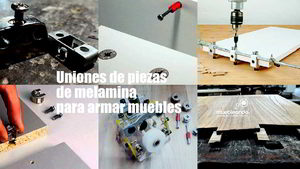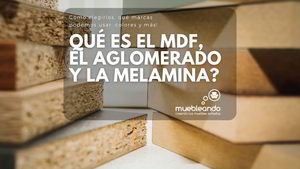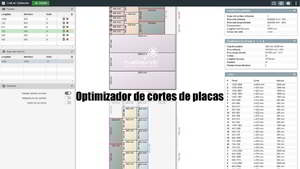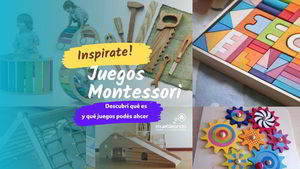Solid wood characteristics. When we think about making furniture, wood is one of the most widely used materials, and almost any type of wood can be used for this purpose. However, some woods are more appreciated than others for their durability, beauty, and versatility.
Each piece of wood is unique. It has distinct characteristics such as texture, aroma, weight, color, grain, grain direction, degree of drying, and splendor. Two pieces placed next to each other may not be exactly the same solely due to these features.
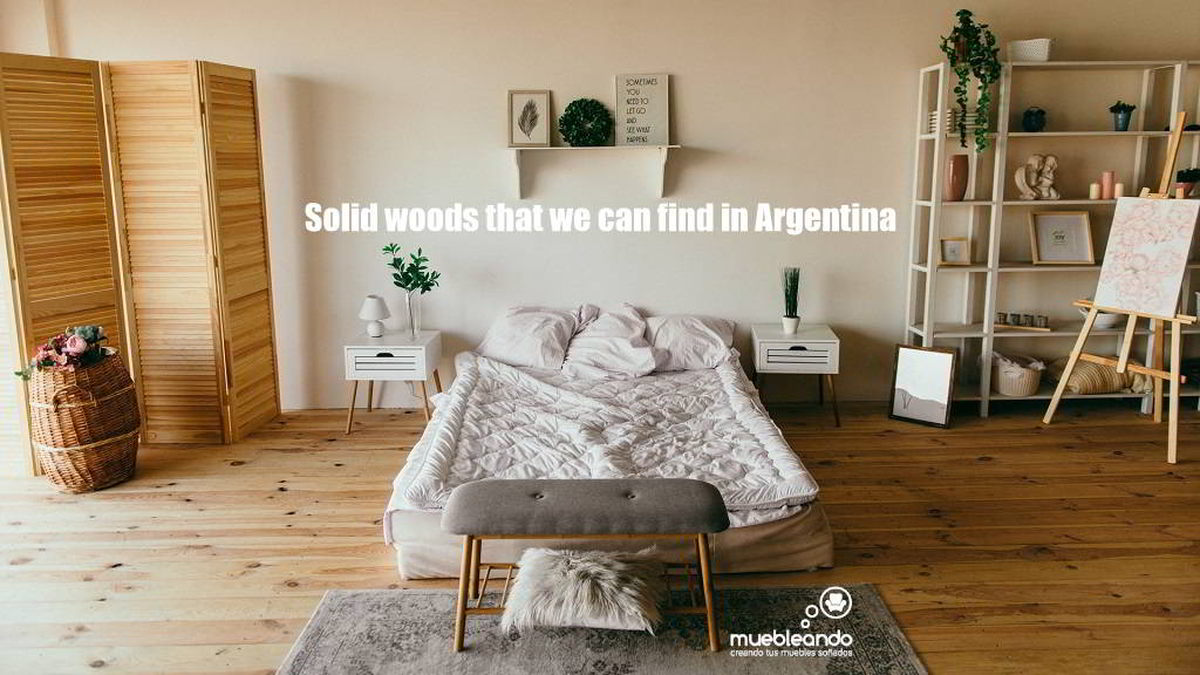
Índice
- Solid wood and its characteristics
- Heartwood and Sapwood, properties of solid wood
- Types of wood: Gymnosperms and Angiosperms
- Wood color
- Hardness of wood define types of solid wood
- Solid wood density kg/m3
- Solid Wood for furniture in Argentina
Solid wood and its characteristics
There are numerous types of woods available, and choosing the right one for furniture is crucial. This decision affects factors such as the furniture's price, durability, design, and overall quality.
The type of wood plays a significant role when it comes to restoring, reselling, or disposing of a piece of furniture.
In this article, we will explore different wood varieties and their characteristics. This will help you determine the best woods to use for your next furniture project.
Heartwood and Sapwood, properties of solid wood
Sapwood and Heartwood are two distinct properties found in all tree species. Their presence is not necessarily related to the wood's hardness.
These properties are characterized by the rings found in the tree trunk and their respective structures.
Heartwood refers to the older rings that no longer transport water. The parenchyma cells and fibers in these rings have died. The heartwood provides structural support to the tree and forms the central part of the trunk.
Due to the oxidation of phenols and the disappearance of starch, heartwood is darker in color. It is often referred to as the core or "heart" of the solid wood.
On the other hand, sapwood represents the younger rings of the tree where nutrients are actively distributed.
Sapwood is lighter in color, more porous, and moist. As parenchyma cells die off, sapwood gradually transforms into heartwood. It also contributes to the tree's structural support and is located beneath the bark.
Types of wood: Gymnosperms and Angiosperms
Gymnosperms are plants or trees that bear seeds and flowers but lack fruits. Unlike Angiosperms, the seeds of Gymnosperms are not enclosed within a protective fruit.
Gymnosperms are known to produce "naked" seeds. There are approximately 15 families of Gymnosperms, and one example is conifers.
Wood color
Solid woods possess unique characteristics that are important to understand. In addition to texture, smell, grain, and weight, color is another significant aspect. Each of these characteristics can be used to classify wood differently.
The color of solid wood is determined by the presence of resins, gums, and tannins within the tree's cells. The color becomes apparent once the wood is cut and allowed to dry. It's important to note that the color of freshly cut wood may differ from the final color.
| Colores | Ejemplos | |
|---|---|---|
| Gimnospermas | From Yellowish White to Ocher Yellow | Pehuén - Cypress - Pine |
| Pinkish White | Pine of the hill - Araucaria | |
| Pinkish Brown | Larch | |
| Angiospermas | Yellowish white | Jacaranda - White Tipa - Chañar |
| Pinkish White | Arrayán - Sauce - Palo rosa - Ñire - Coihue | |
| Ocher yellow | Guatambú - Palo amarillo - Grapia - Quebracho blanco - Tala | |
| Greenish yellow | Palo santo - Coco - Lapacho black | |
| Brown | Laurels - Peteribí | |
| Pinkish Brown | Raulí - Cebil - Timbó - Caldén - Algarrobo | |
| Reddish brown | Quebracho - Mistol - Churqui - Quina - Cancharana | |
| Purplish Chestnut | Itín - Walnut |
Solid wood characteristics: smell or aroma
The aroma or smell is another remarkable characteristic of wood. It can vary from being very strong to very subtle, with a range of intensities in between. The scent is derived from the resins and oils present in the tree. Woods such as palo santo, lapacho, cedar, or incense are highly valued for their pleasant aroma, which is why they tend to be more expensive compared to woods like black laurel, which has a strong scent, or Timbó, which can make us sneeze.
For instance, poplar is commonly used in food and grocery drawers due to its lack of odor. Cedar, on the other hand, is often used for storing tobacco because of its delightful aroma.
Wood graining
The grain of the wood is another characteristic that can make our furniture look spectacular if we choose well.
The veins can be different depending on how the boards are cut in the tree but in general we can find striped veins like those we see in the pines, flowery veins like in Guatambú, Veins of overlapping arches like in Cedar or also Gasped Veined that we see in the Peteribí.
The grain of the solid wood
The fibers and vessels within trees have a specific direction, which can be either vertical, following the direction of growth, or non-uniform.
- Right grain is observed in trees where the anatomical elements grow parallel to the tree's axis. Examples include Paraná Pine or Alerces
- Oblique grain occurs when fibers grow at an acute angle in relation to the tree's axis. Examples of this type of grain include Lapacho or Caldén
- Interlocking grains appear when the anatomical elements of the wood intersect and alternate. They can be challenging to work with. Examples in this category are red quebracho, viraró, or palo santo.
There are two more types of grains:- curly grain, where the elements form wavy or sinuous patterns along the longitudinal axis of the trunk (highly sought after);
- and irregular grain, where the fibers appear in various directions.
Hardness of wood define types of solid wood
Hardness is one of the easiest ways to distinguish solid wood for your furniture. In botanical terms, hardwood comes from the group of coniferous trees. Both hard and soft wood are used for everything from decorative to structural uses.
Hardwood
Hardwood is denser, it comes from angiosperm trees such as maple, oak, and walnut. These trees have their densest fibers (fiber tracheids and libriform fibers).
Since hardwood is slow growing, it is relatively more expensive compared to softwood. However, there are some exceptions due to the other features we looked at. If it is difficult to work, obviously its low cost.
Hardwood is durable, fine-grained. Its higher density prevents moisture transfer a little more. That is why hardwood is used for outdoor furniture.
It requires little maintenance and also has low sap content and good fire resistance. Not all types of hardwood are ideal for making furniture.
Softwood
Softwood comes from gymnosperms. Softwood includes trees such as pine, cedar, saligna, among others. Trees that have leaves throughout the year tend to be less dense than the rest, so they are easier to cut.
Softwood consists of tracheids and medullary rays. It has a higher content of sap and a lighter color although it does not have much resistance to fire. Its fine and light structure makes softwood ideal for making furniture.
Remember that this wood could not be used for outdoor furniture. Furniture would be damaged quickly.
Semi soft wood or semi hard wood
Semi-soft or semi-hard wood is in the middle. They have a medium density. It can also be a young hardwood that lacks maturity. Some examples can be the Guatambú or the Incense.
Solid wood density kg/m3
As we saw, hardwood is denser than softwood. The different types of wood according to their common name have a Weight x Cubic meter relationship in this report prepared by the INTI on the subject.
For example, Cedar has 530 Kg / m3. Cedar is a soft wood. Also El Petiribí, another soft wood, has a density of 600 Kg / m3. The Paraná Pine of 500 Kg / m3, the Oak 600 Kg / m3 and the Eucalyptus Saligna of 560 Kg / m3.
On the other hand, the Quebracho Colorado, hard solid wood, has a density of 1220 Kg / m3. It is one of the densest and heaviest. The Lapacho is above 1000 Kg / m3 and the Palo Santo 1150 Kg / m3. We could go through the table looking for a few others that we know of.
The density as you will see on the chart can be measured when the wood is still green or when it is dry. The most successful when talking about types of wood for furniture is to measure when it is dry.
Drying can occur naturally by leaving air between the boards or artificially in quick drying ovens.
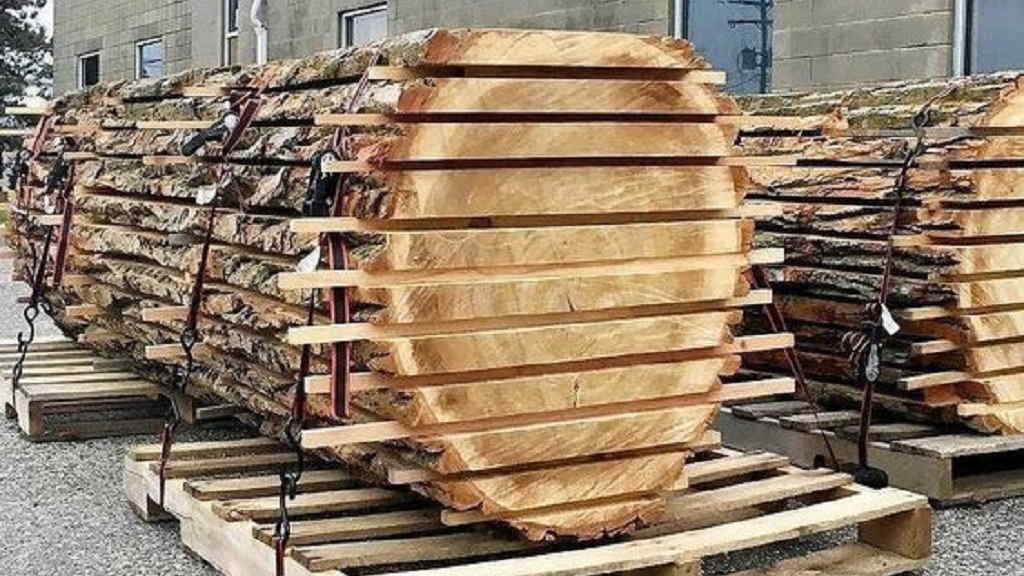
Hardwood examples
The Palo Santo 1150 Kg/m3
Palo Santo, a great wood known because it can be used to make very aromatic mates. It is said to be healing and very spiritual. Perhaps due to its aroma.
In some cultures lighting a fire a piece of Palo Santo is quite a ritual. It is almost anti humidity. It was chosen for years to create propellers for boats. The Palo Santo is in the group of strong woods.
- Color: brown, olive and black tones. It darkens the older the wood.
- View and use: medium texture and quite light.
Anchico colorado (Rigid parapiptadenia) 950 Kg / m3
It is a heavy and very resistant wood. High density, difficult to work or nail. It has a particular grain that also makes it difficult to brush.
The anchico is a wood that makes up the Missionary Forest. It has very little odor, almost absent. It is very resistant to the elements and insects.
When drying, it may show cracks or cracks. It is widely used for outdoor furniture, for the construction of beams, braces, posts, sleepers and all kinds of structures for construction.
- Color: it has a medium rubbed ocher color, a reddish brown.
- View and use: medium and homogeneous texture.
- The grain is obliquely intertwined.
- Common uses: outdoor furniture and construction.
- Finish: takes some varnishes and lacquers well. Difficult for the application of some paints.
Guayubira or Guayaibí (American Patagonula) 900 Kg / m3
It is a semi-heavy wood and has dimensional stability. Extremely hard but easy to work with and dries easy. It can be attacked by fungi and insects if we do not treat it well with a product.
It is a wood that we can find throughout the Northeast of Argentina reaching Paraguay.
It is easy to work with nails, screws, varnishes and very flexible.
- Color: It has light and dark brown colors with some black streaks.
- View and use: fine to medium and homogeneous texture.
- The grain is oblique straight.
- Common uses: floors, decks, beams, openings, tables, braces, stairs, siding and clutches. Also for guitars, tool handles and others due to its great flexibility.
- Finish: any type of finish can be easily applied.
Examples of Semi Hardwoods
Walnut (Juglans australis) 640 Kg / m3
Walnut is one of the most popular types of wood. Its dimensional stability, shock resistance, strength properties and rich coloring are the reasons for its popularity.
- Color: pale light brown to dark chocolate brown with darker brown streaks. The sapwood is pale grayish yellow to almost white.
- View and use: medium texture and quite light.
- The grain is moderately open.
- Common uses: high-end furniture, carving, floor details, musical instruments, among others.
- Finish: must be finished with oil-based polyurethane.
Peteribí (Cordia trichotoma, No Petiribí) 600 Kg / m3
This is a medium to large sized tree and feels soft to the touch. It is durable, strong and flexible. In addition, it has excellent nailing, screw holding and gluing properties. Therefore, carpenters love to work with ash wood even though it produces a distinct and moderately unpleasant odor when working on it.
- Color: clear, creamy brown.
- View and use: resistant and flexible.
- The grain is open with occasional brown streaks.
- Common Uses: Flooring, carpentry, boxes, baseball bats, and other turned objects like tool handles.
- Finish: take all the finishes.
Maple (American Maple, used more in the US and Chile) 705 Kg / m3
Maple wood is sturdy, split resistant, and durable. It can be cleaned with a damp cloth, making it ideal for kitchen cabinets.
- The heartwood is typically a darker shade of reddish brown. The color of the sapwood varies from almost white to a whitish cream color. Although it can also be reddish or golden in color.
- Sight and use: moderately hard but strong.
- The grain is closed and generally straight, but can be wavy.
- Common uses: from wooden furniture and utensils to flooring and carpentry.
- Finish: take all the finishes.
Examples of soft solid woods
Paraná Pine (Araucaria angustifolia) 500 Kg / m3
Trees are susceptible to needle blight tree disease. Scots pine wood is one of the strongest softwoods available and is also resinous. It is less durable, but not susceptible to some pests like borer.
It is usually used in 2 or 3 ". In measures of 1/2 inch or 3/4 how it has hard knots they tend to come off or come off when we machine it.
- Color: yellow with creamy white. The heartwood is light reddish brown. The sapwood varies from pale yellow to almost white.
- Look and use: reasonably strong and light.
- The grain is straight.
- Common uses: construction, panels, boxes, flooring, and interior joinery.
- Finish - Finishes good but needs to be sealed with water or oil based polyurethane.
There are several types of pine. We can find the Paraná Pine but also the Silvestre Pine (reddish), the Radiata Pine (with many knots, with whitish sapwood), Maritime Pine (with an orange-yellow heartwood) or the Tea Pine (Pinotea, was imported from Spanish lands with pale yellow sapwood and reddish-hued heartwood)
Solid Wood for furniture in Argentina
Once solid wood is processed, there are several vigorous procedures that it must undergo to become furniture. Wood is simply a material waiting to be altered and made into a final product. Furniture is the end goal where the wood has been manipulated and molded into something that can be proudly displayed.
We must be patient with the times and learn step by step how to use this excellent material.
Humans have used wood to make furniture for thousands of years. Despite various technical advances, humanity has yet to find anything as versatile as wood for making furniture. It is also remarkably strong and requires little maintenance.
We have seen constructions in Bolivia that are as new and date from the creation of the Viceroyalty. Fortunately, in Argentina, the cradle of many cultures, knowledge of wood treatment has arrived from all regions of the world.
Unlike most other materials, wood can have multiple useful lives through finishing. Therefore, wood furniture offers excellent value for money while fostering a feeling of natural look, appearance, beauty and feel. It's no wonder why wood remains a popular choice for furniture.
Using solid wood is not necessarily an anti-ecological option because its use influences its replanting. Wood is non-toxic and connects us with nature in our environments.
In Argentina we can find different species. The best known here in the Buenos Aires area (where almost everything arrives through the port) can be: the Petiribí, the Saligna Eucalipto, the pine (with all its variants), the viraró (widely used more than anything in floors and openings ), Guatambú (one of the best woods that we can choose), Guayubira, Kiri, Timbó, Anchico, Quebracho Colorado, Roble, Lapacho, Algarrobo and others. These last 6 are found further north of the country as well.
On the Misiones and Entre Ríos side we can find Pino Paraná, Kiri, Petiribí, Guatambú, Paraíso and Saligna.
Towards the South we can use Lenga, Pino Oregon, Radal or Ñire.
When choosing wood we must take into account several things for our next furniture. One is how it will go with the colors in our house. With the colors of the walls, floors, chairs, tables and others. There is a wide range of wood colors to choose from.
To face the construction of the furniture we must also take into account the amount of wood. Perhaps we will not find all that we need, perhaps the length does not necessarily connect with the pieces that we can make.
The wood coming out of the tree will have a length but the sawn and already processed wood will be of another dimension.
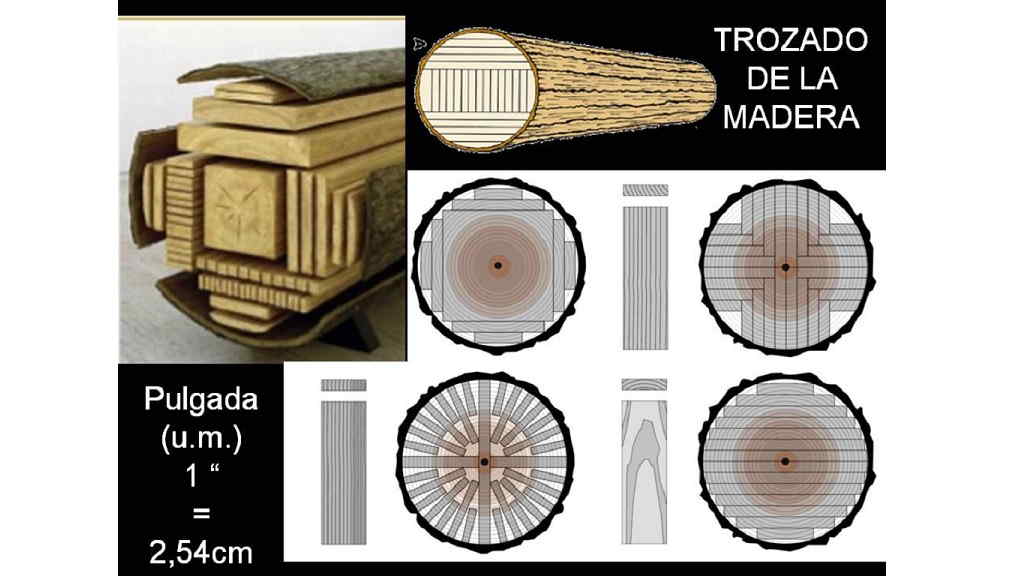
Another very important factor is how dry the material is. Dry solid wood is the best choice we can make. If it's green it will keep moving and twisting. Solid wood moves if it is green and if it only breathes on one side only.
For example, if we must paint the top of a table, we must paint it on both sides, otherwise it will bend. If we plug the pores on one side only, then there is no doubt, it will double.
Today it`s more feasible that we can order the wood in inches and length. A few years ago and is still being done by experienced carpenters, the wood was ordered in feet.
We will see in another article what this measurement is like because you have to understand it very well to use it. Also in another article we promise to comment and teach you all the processing that wood undergoes from when it is a tree to creating a piece of our next piece of furniture.
We await your comments and we want you to send us details of the types of furniture you make, of the woods most used in your workshop, of those particular details in the construction of furniture in your region and it would also be interesting to know about the purpose of this furniture that you are going to build, if it is going to be office furniture or for your home.
And don't forget to contact us by whatsapp if you have any questions.

